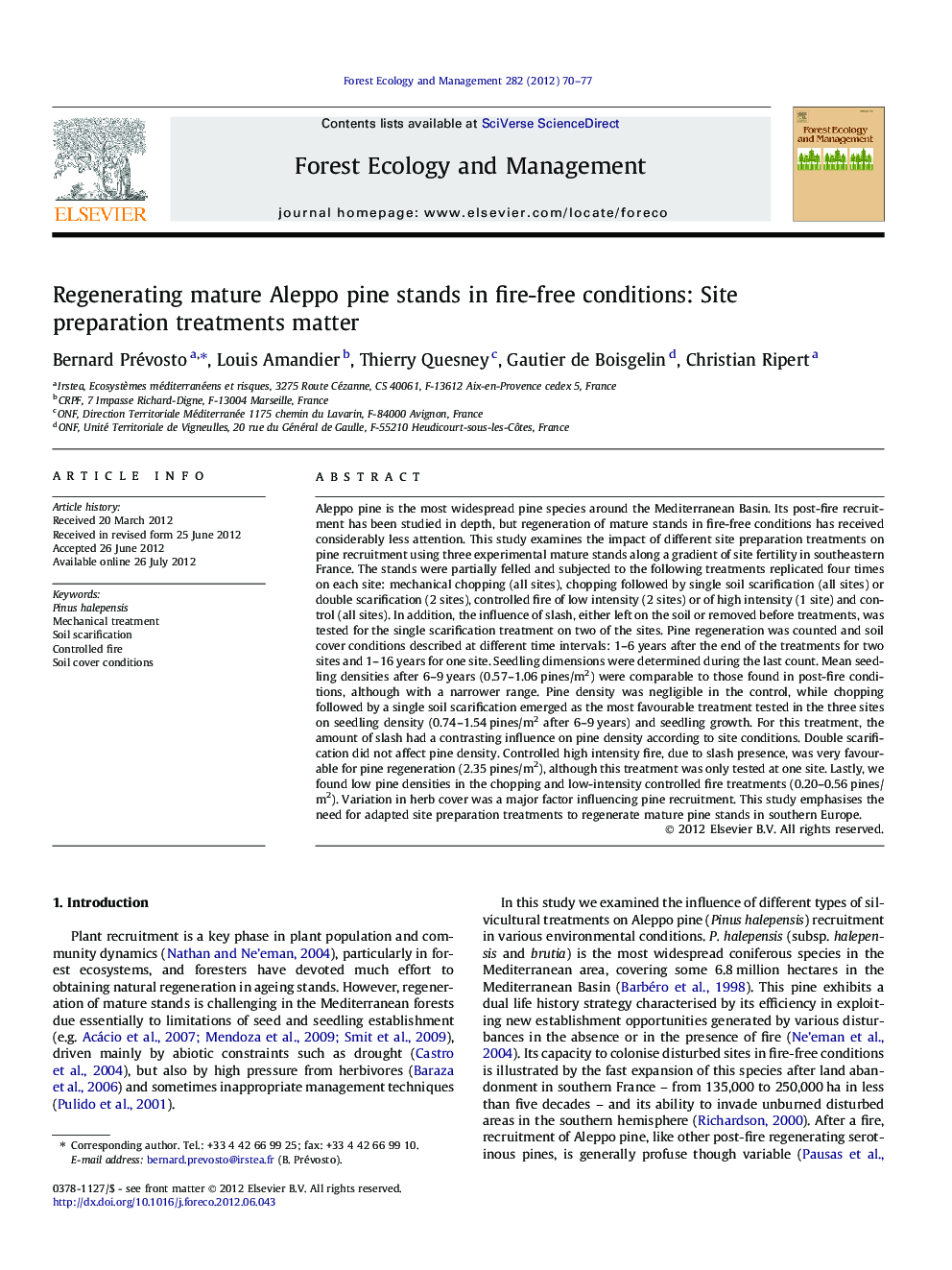| کد مقاله | کد نشریه | سال انتشار | مقاله انگلیسی | نسخه تمام متن |
|---|---|---|---|---|
| 87421 | 159250 | 2012 | 8 صفحه PDF | دانلود رایگان |

Aleppo pine is the most widespread pine species around the Mediterranean Basin. Its post-fire recruitment has been studied in depth, but regeneration of mature stands in fire-free conditions has received considerably less attention. This study examines the impact of different site preparation treatments on pine recruitment using three experimental mature stands along a gradient of site fertility in southeastern France. The stands were partially felled and subjected to the following treatments replicated four times on each site: mechanical chopping (all sites), chopping followed by single soil scarification (all sites) or double scarification (2 sites), controlled fire of low intensity (2 sites) or of high intensity (1 site) and control (all sites). In addition, the influence of slash, either left on the soil or removed before treatments, was tested for the single scarification treatment on two of the sites. Pine regeneration was counted and soil cover conditions described at different time intervals: 1–6 years after the end of the treatments for two sites and 1–16 years for one site. Seedling dimensions were determined during the last count. Mean seedling densities after 6–9 years (0.57–1.06 pines/m2) were comparable to those found in post-fire conditions, although with a narrower range. Pine density was negligible in the control, while chopping followed by a single soil scarification emerged as the most favourable treatment tested in the three sites on seedling density (0.74–1.54 pines/m2 after 6–9 years) and seedling growth. For this treatment, the amount of slash had a contrasting influence on pine density according to site conditions. Double scarification did not affect pine density. Controlled high intensity fire, due to slash presence, was very favourable for pine regeneration (2.35 pines/m2), although this treatment was only tested at one site. Lastly, we found low pine densities in the chopping and low-intensity controlled fire treatments (0.20–0.56 pines/m2). Variation in herb cover was a major factor influencing pine recruitment. This study emphasises the need for adapted site preparation treatments to regenerate mature pine stands in southern Europe.
► We examined impacts of site preparation treatments on pine recruitment for 1–16 years.
► Treatments included chopping, scarification, prescribed fire, and control.
► Pine density was lowest in the control, chopping and low-intensity fire treatments.
► Scarification and high-intensity fire treatments were the most favourable.
► Reduction of ground vegetation by the treatments is essential to pine recruitment.
Journal: Forest Ecology and Management - Volume 282, 15 October 2012, Pages 70–77